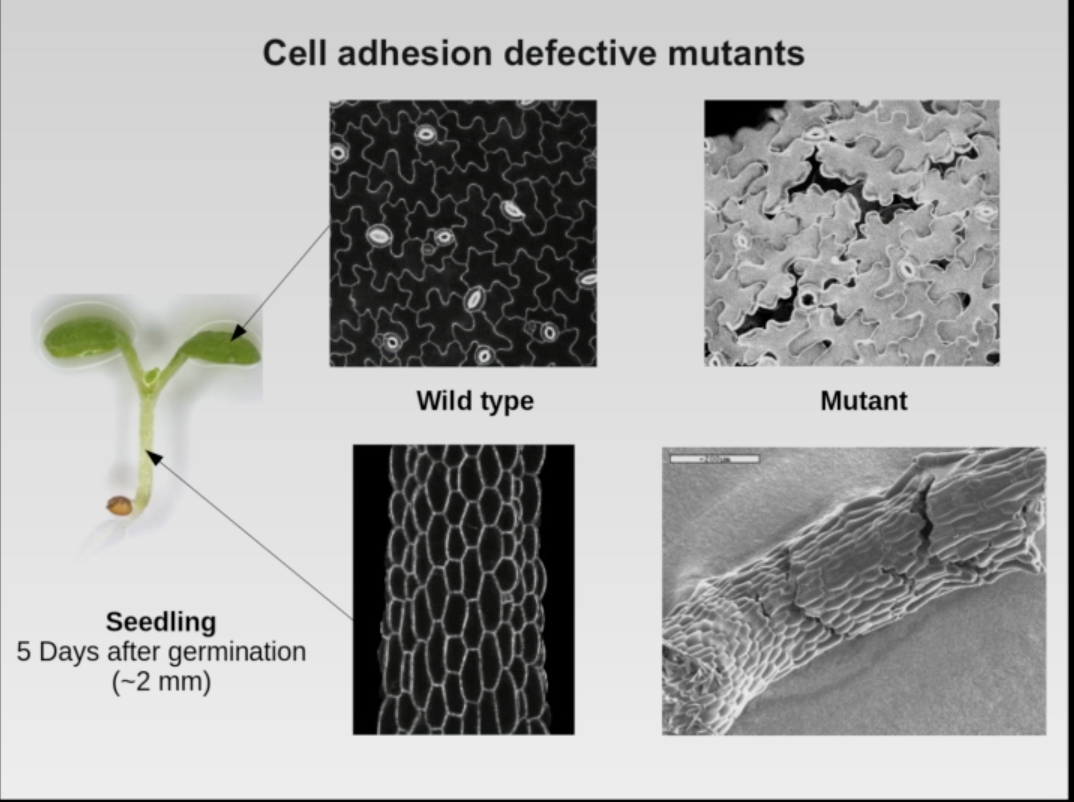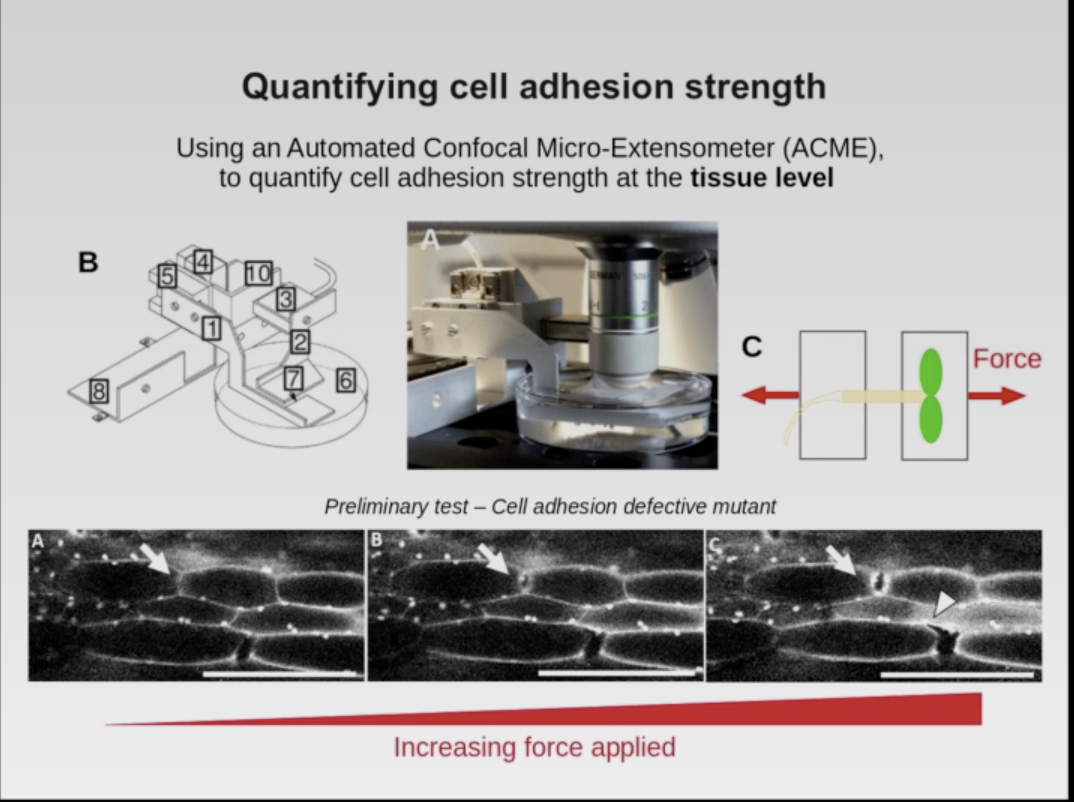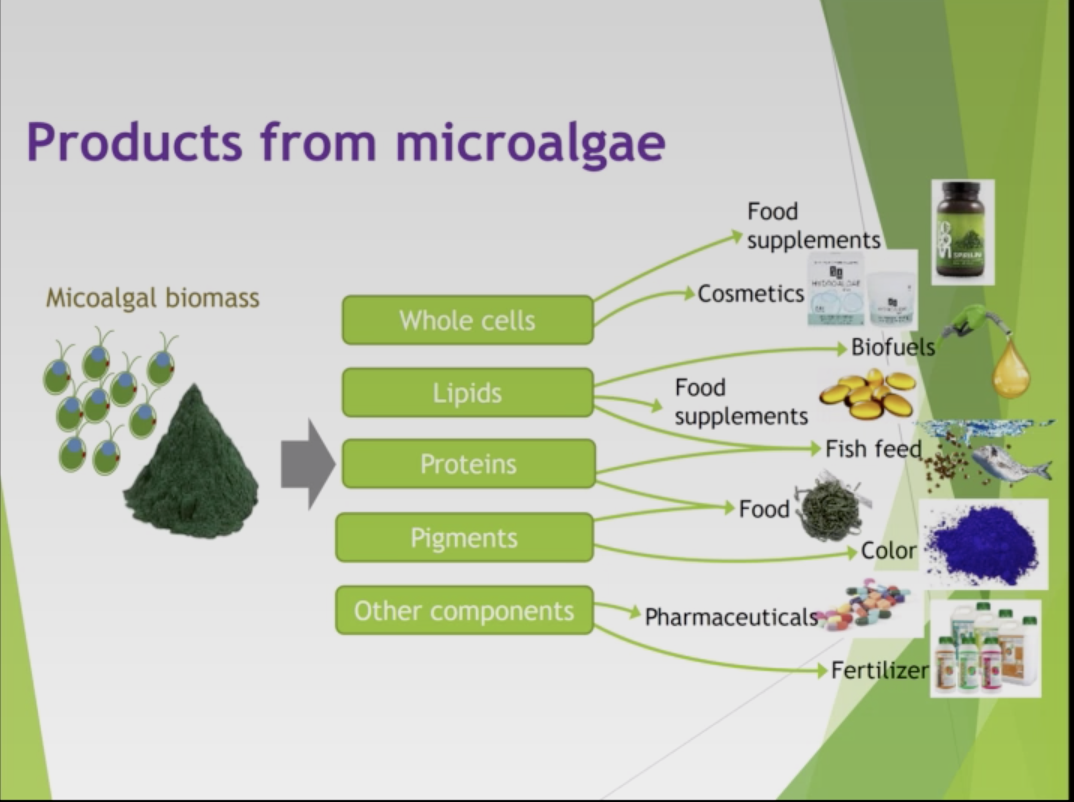Plants sticking together and algae fighting climate change with Stéphane Verger and Christiane Funk
February 4, 2020
First Pitcher: Stéphane Verger, Assistant Professor at Umeå Plant Science Center, SLU.
How do Plants Achieve Multicellularity?
Most of the plants that we see around us in nature and the plants that we study in the lab or in the field, whether it is for fundamental research or breeding and improvement of agriculture, share the fundamental feature of being multicellular organisms.
Multicellularity can be achieved by a tight control of cell-to-cell adhesion. This mean making sure that the cells that make up the organism stay attached to each other to maintain the overall integrity of the organism, but also that the adhesion is not too tight and allows the proper growth and development of the organism. While this has been largely studied in animal systems, we still know very little about how plant cell-to-cell adhesion works.
Recently researchers have started to identify genes in plants that are involved in the control of cell-to-cell adhesion, and while there is still a long way to go, the complexity of the sensing and signaling pathways involved are starting to be understood. But ultimately, adhesion is a physical parameter.
What is the strength holding the cells together? What are the forces that would otherwise pull the cells apart? Are these mechanical forces also signals that the plants can perceive and respond to in order to maintain cell-to-cell adhesion?
Stéphane is now initiating interdisciplinary approaches combining biology, chemistry and physics to better understand how plants achieve their multicellularity.
Can we use local microalgae to clean our water and produce energy-rich biomass?
By 2050 the human population is forecast to expand from 7.5 to 9.6 billion people. We will require 70% more food, 50% more fuel, and 50% more water. At the same time we need to reduce CO2 emissions by over 80% to slow down climate change!
One approach to address this problem is to recycle CO2 for fuel- or chemical-production using photosynthesis. Photosynthetic organisms use solar energy to incorporate atmospheric CO2 into organic molecules (biomass). They therefore not only mitigate climate change by counteracting increased levels of atmospheric carbon dioxide, they also produce biomass, which provides food and feed, and even can be used in technical processes to gain valuable bio-products and biofuels. Microalgae and cyanobacteria are without doubt the most productive photosynthetic organisms on Earth. Compared to energy crops microalgae are known to obtain higher effective photosynthetic efficiency, their biomass can be doubled in a few hours (i.e. as short as 3.5 h). Microalgae can synthesize 20 times more oil per hectare than terrestrial plants, which then can be used e.g. for biofuel production. And microalgae can utilize industrial flue gas as a carbon source and grow in wastewater.
While most algal parks are located in warm and sunny countries Christiane and her colleagues were able to show that local microalgae can be used successfully for wastewater reclamation and biomass generation even in Nordic climates. They also showed that our Nordic algae clean wastewater from nitrogen and phosphorus as well as from contaminants more efficiently than conventional wastewater reclamation.
Besides biofuels (and biogas), what other uses can you think of for algal biomass produced through wastewater processing?








